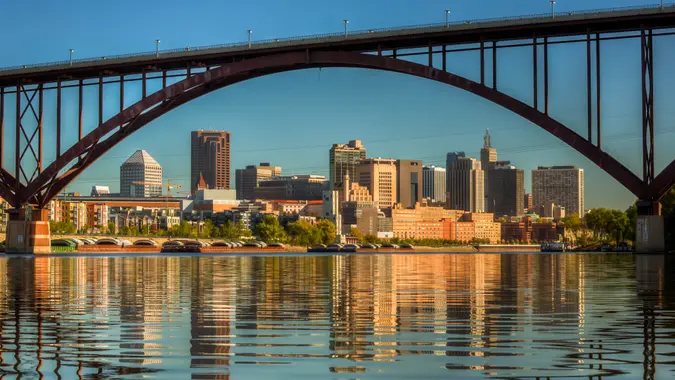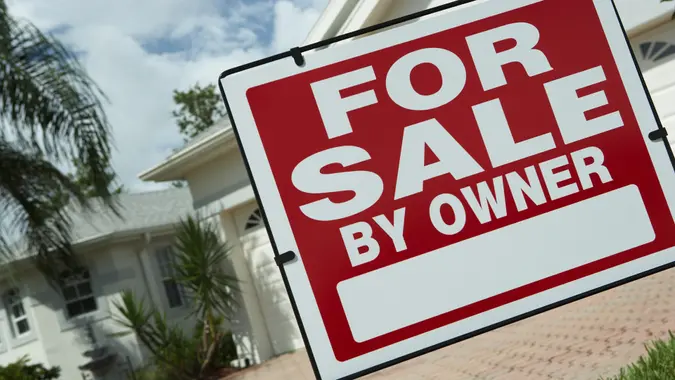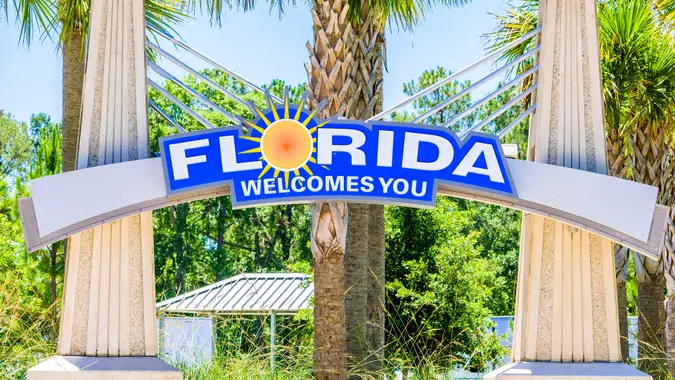15 Biggest American Real Estate Boomtowns Post-Pandemic

Commitment to Our Readers
GOBankingRates' editorial team is committed to bringing you unbiased reviews and information. We use data-driven methodologies to evaluate financial products and services - our reviews and ratings are not influenced by advertisers. You can read more about our editorial guidelines and our products and services review methodology.

20 Years
Helping You Live Richer

Reviewed
by Experts

Trusted by
Millions of Readers
The COVID-19 pandemic upended America’s work norms by shutting down offices and requiring people to work remotely, which in turn upended the U.S. housing market. Numerous boomtowns arose amid mass migration into cities where homes (and home offices) were cheaper. Four years later, many of those real estate boomtowns have fallen on lean times, and post-pandemic boomtowns have emerged to take their place.
In the context of housing and real estate, “boomtown” usually means a place that has seen rapid population growth. As more people arrive, demand for homes increases and prices follow suit. But even cities without much change in population might qualify as real estate boomtowns if they have limited housing inventory that drives prices higher.
One post-pandemic real estate trend that largely mirrors a decades-long pattern is that the fastest population growth is happening in Sunbelt cities — especially down South. Southern cities dominate the list of the fastest-growing large metro areas in the United States, according to the latest Census Bureau data.
But some things have changed since before the pandemic. As the Census Bureau noted in a May 2024 report, much of the growth these days is happening in places far from urban downtowns rather than the inner suburbs that saw most of the growth in 2019 and earlier.
“While the Census Bureau doesn’t define exurbs, we tend to think of them as far outer suburbs of metro areas, and they often have a mix of urban and rural character,” Luke Rogers, a demographer in the Census Bureau’s Population Division, said in a news release. “Exurbs have sometimes been among the most rapidly growing communities, but this appears to be even more true now than before the pandemic.”
In terms of post-pandemic real estate boomtowns, here are the 15 cities that saw the biggest population growth between July 2021 and July 2022, according to the Census Bureau. The figures reflect the numeric increase in population during that time period:
- Fort Worth, Texas: 19,170
- Phoenix, Arizona: 19,053
- San Antonio, Texas: 18,889
- Seattle, Washington: 17,749
- Charlotte, North Carolina: 15,217
- Jacksonville, Florida: 14,408
- Port St. Lucie, Florida: 13,887
- Cape Coral, Florida: 13,017
- Houston, Texas: 11,223
- Georgetown, Texas: 10,887
- North Las Vegas, Nevada: 9,419
- Henderson, Nevada: 8,994
- Dallas, Texas: 8,833
- Irvine, California: 8,589
- Frisco, Texas: 8,506
Three of the above cities — Fort Worth, Henderson and Charlotte — were also among the Top 5 big cities that saw the highest percentage increase in population between 2022 and 2023, Axios reported. The others were Atlanta, Georgia, and Raleigh, North Carolina.
More From GOBankingRates
 Written by
Written by  Edited by
Edited by 

























